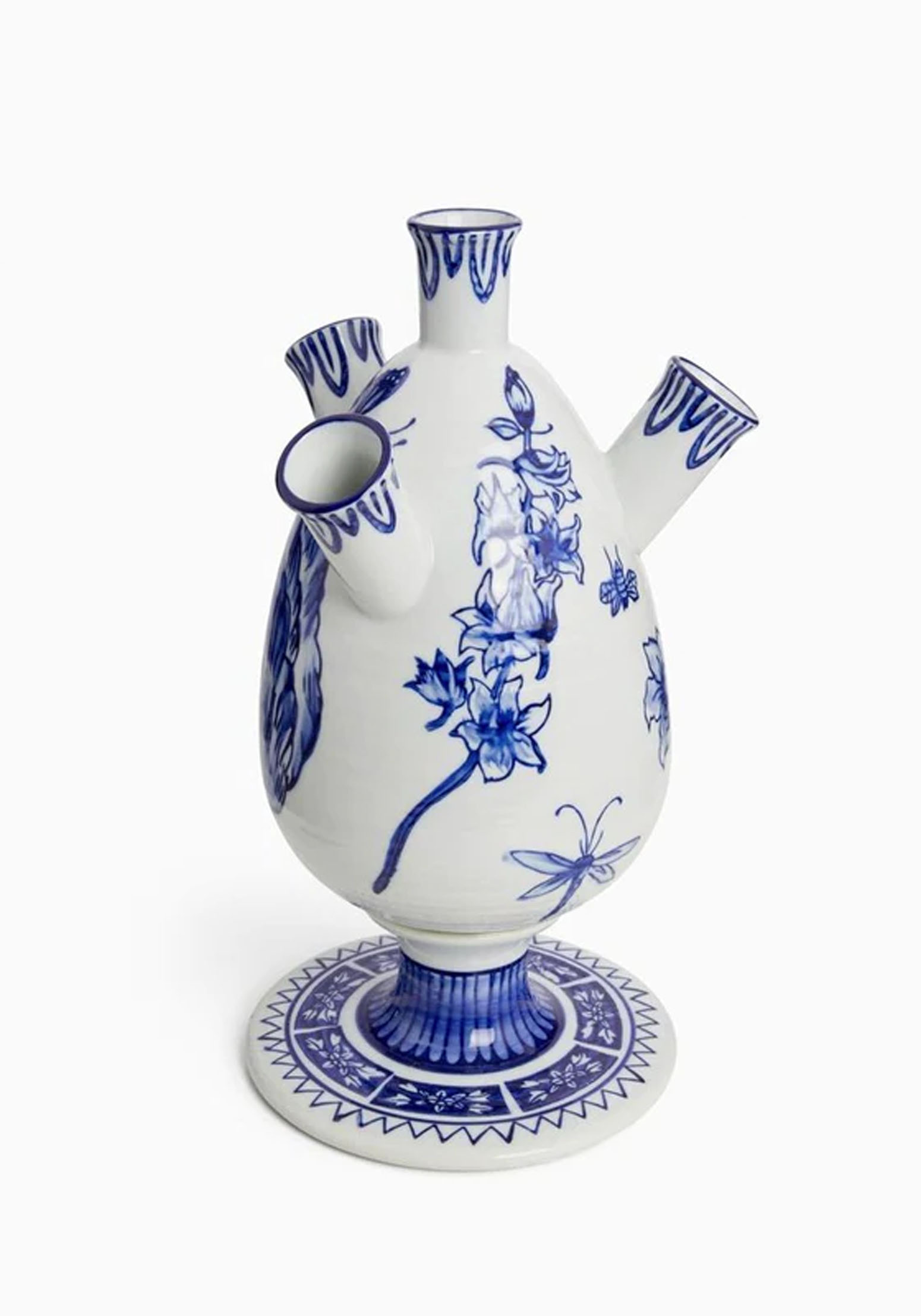Delft Pottery
Tulips, windmills and clogs these are all things that remind us of Holland
29/09/2023 Blog
Tulips, windmills and clogs these are all things that remind us of Holland but the country is also well known for producing beautiful blue and white Delft ware pottery.
I remember many years ago travelling around Holland and seeing rows of shops selling the traditional Delft pottery from the cheap souvenir wares to intricate large high quality pieces. I really enjoyed exploring them and seeing the craftsmanship and skill involved in making the pieces.
Delft ware originated in Antwerp around 1500 when an Italian potter called Guido da Savino started a ceramics studio producing tin glazed earthenware painted in vivid shades of blue. Many other artisans quickly followed in his footsteps and were situated in or around the city of Delft so hence the name Delft ware or Delft Blauw.
The designs usually depict floral motifs, landscapes, historical or biblical scenes. Their trade soon expanded, and many potters moved into larger premises often buildings which were former breweries.
From around 1640 the Delft potters began using their personal monograms and distinctive factory marks. The Guild of St Luke to which all painters had to belong to choose the very best and most talented potters to be able to trade as Master Potters.
By the late 17th Century the Netherlands grew into a large colonial power trading centre. The Dutch East India Company had a lively trade with the East and imported millions of pieces of Chinese porcelain. Their high quality and intricate designs impressed many, but they were expensive so only the rich could afford to buy them. The Dutch saw an opportunity to produce a cheaper alternative and introduced a range of Oriental inspired designs along with their traditional Dutch designs.

In the 18th Century Delft ware became popular in China and Japan and the trend reversed with Eastern potters producing Delft designs.
Delft pottery was and is produced in a range of wares from simple household objects, sets of jars known as Kast-stel sets, pictorial plates with native Dutch scenes or plates with the music and words to well-known songs. One of their staple lines was decorated tiles and it is thought that over eight hundred million tiles were made in the 17-18th Centuries.
By the 19th Century unfortunately some of the Delft ware factories began going out of business as they could no longer compete with the cheaper English ceramics being sold on the European market.
Today Delfts Blauw is hand painted to the base of each piece made identifying that it is genuine Delft item and hopefully a collector’s piece of the future.